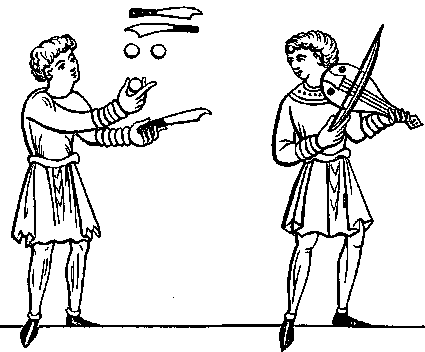Popular Music Of The Olden Time Vol 2
Ancient Songs, Ballads, & Dance Tunes, Sheet Music & Lyrics - online book
| Share page | Visit Us On FB |
|
|
|||
|
ORIGIN OF THE FIDDLE OR VIOLIN. |
761 |
||
|
|
|||
|
instruments & archet (prefixed to Antoine Stradioari, 8vo., Paris, 1856), gives no examples of instruments of the violin kind of such early dates as we have in England, and as my account will differ in many essential points from his, I am tempted first to reproduce an Anglo-Saxon " fithele," from a manuscript of the tenth century in the British Museum (Cotton MSS., Tiberius, c. vi.), although it has been accurately copied by Strutt, and was published in his Sports and Pastimes of the People of England. |
|||
|
|
|||
 |
|||
|
|
|||
|
Here we find the four strings and the bow. The bridge is not shown in the manuscript, but as bridges had certainly been in use for two centuries on other instruments, there can be no doubt that it had one. M. Fdtis remarks, very justly, that the bridge is frequently omitted in early drawings and sculptures (although to be found in others of corresponding dates), and even in books of the sixteenth century. Some draughtsmen were less exact in detail than others.
The bent sides of the fiddle seem to have been introduced for the purpose of holding thi! instrument between the knees. We find them so formed, and held between the knees, in sculpture of the twelfth century, yet not greatly increased in size.
The long neck is found in the thirteenth and fourteenth centuries, and we have a fiddle of this kind, with the body shaped like a cruth or crowd (i. e., somewhat resembling that of a long, narrow guitar), in the brass monumental plate of Robert Braunch, erected at Lynn, in Norfolk, in 1864.
The use of the upper part of the finger-board is shewn in one of the sculptures on the outside of St. John's Church, Cirencester, where the player on a fiddle with a neck of well-proportioned length, has his left hand close to the body of the instrument, and the bow upon the strings, as if ready to draw out the high notes. The date is between 1504 and 1522.
The history of instruments of the violin tribe is interesting, because the use of the bow was wholly unknown to the ancients. The two earliest instruments known to |
|||
|
|
|||